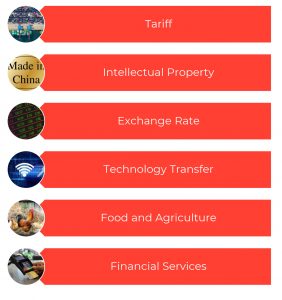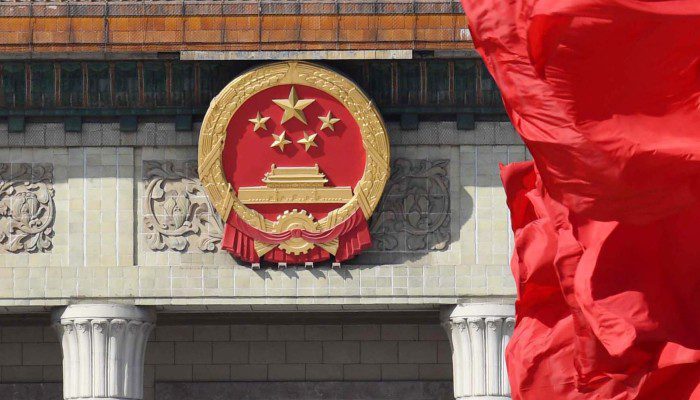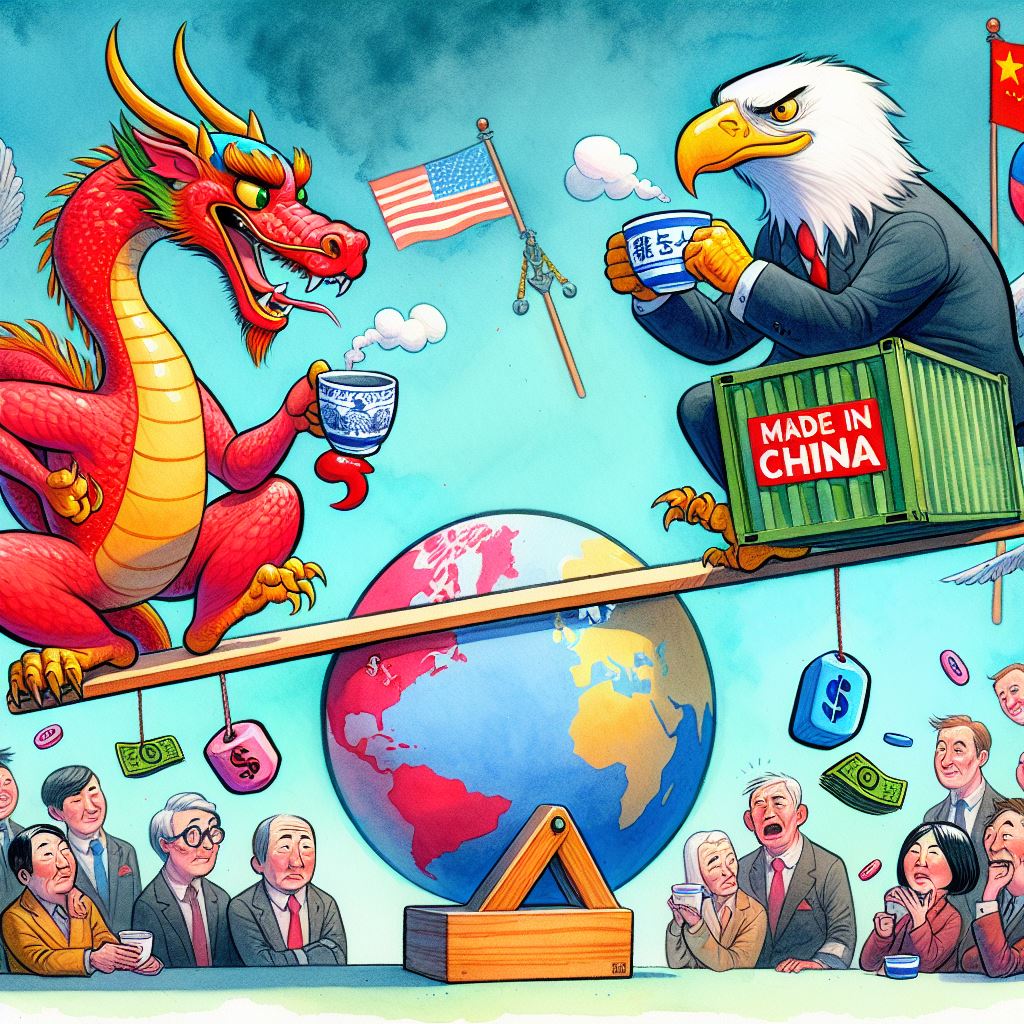The U.S-China trade war is not yet over. However, both countries have recently made efforts to sign a trade deal that would supposedly ease more than a year of economic conflict.
Read our previous post about the U.S.- China Trade War Explained
The first phase of the trade agreement consists of different aspects of the economy including tariff imposition, IP rights protection, exchange rate competitiveness, technology transfer, and financial services. Both countries also agreed to aim for further expansion of trade. Read for a full understanding of the trade deal.
Signing a partial trade deal
On January 15, 2020, U.S. President Donald Trump and Chinese Vice Premier Lu He signed a trade agreement that is considered at its “first phase”. The conflict between the two world’s largest economies is expected to experience many obstacles. This is because the U.S. and China must aim to come up with settlement arrangements favorable to both parties in the long run. Nevertheless, the ‘phase one’ of the trade deal was signed to “partially” move on from the economic dispute.
In a press conference, China’s State Council officials explained the details of the agreement through consultations with different media outlets including Reuters, Bloomberg, China Daily, and Xinhua State News Agency.
Key trade deal aspects

Tariff imposition on traded goods
The U.S. government has promised to cancel some tariffs to be imposed and were already imposed on China. Furthermore, it will widen the scope of the tariff exemption for Chinese exports and push for a downward trend of the tariff increase. Last year, President Trump delayed a 30 percent tariff rate increase of Chinese imports in recognition of China’s 70th founding anniversary.
In exchange, the Chinese government has decided to cancel the implementation of tariff increase on imported U.S. goods such as cellphones, laptop computers, toys, and clothing. It also included a 25% tariff on U.S.-made automobiles. China planned to impose the measure on December 15, 2019, until the phase one of the trade deal was agreed upon.
China’s finance ministry, however, noted that tariffs that were already implemented on U.S. goods would remain. On the other hand, the U.S. also left in place the 25 percent tariffs on USD 250 billion worth of Chinese goods.
Intellectual Property Rights (IPR)
U.S. and China also settled with the contentious issue about IPR. The U.S. has invoked the need for China to submit an “Action Plan” toward the protection of intellectual properties. Thus, in response to this call, China consented to devise plans regarding the protection of trade secrets and IP-related issues.
Scope of the trade secrets
Identification and liability for trade secret misappropriation covering:
- Electronic intrusions
- Breach of privacy or unauthorized disclosure of information
- The burden of proof or production of evidence against trade secrets misappropriation
- Prevention measures to avoid the use of misappropriated trade secrets and confidential information
- Establishing a threshold for initiating criminal enforcement
- Criminal procedures and penalties (such as against theft, physical or electronic intrusion, improper use of a computer system)
Other IP-related issues
Pharmaceutical-related IP (such as a nationwide system for market approval of patents or license)
Extension of patent validity
Piracy and counterfeiting on e-commerce platforms
- Crackdown on the production and export of pirated and counterfeited products
- Expeditious takedowns of malicious registration of a trademark
- Full transparency of geographical indication concerning product origin
- Training of relevant customs personal for strict border control related to the trade of counterfeited goods
- Judicial enforcement of IPR criminal liabilities
The United States also emphasized on intensified enforcement at physical markets, an audit of unlicensed software by a non-government owned third party and adequate protection against bad faith trademarks.
Commitment to the exchange rate competitiveness
In August 2019, the U.S. Department of the Treasury designated China as a currency manipulator. China immediately rejected such a ‘currency manipulator’ label and condemned the U.S.’ show of ‘wilful unilateral and protectionist behavior’. However, U.S. President Donald Trump put the currency war to rest after revoking such designation ahead of the signing of the trade deal. Thus, both parties decided on the following steps to preserve the international monetary system.
- Avoid exchange rate devaluation.
- Adhere to IMF agreement on avoiding exchange rate manipulation.
- Determine and maintain the exchange rate system.
- Keep constant communication and negotiation in foreign exchange markets, activities, and policies.
- Improve data transparency by participating in IMF investigation.
Technology transfer
Both parties agreed to reinforce free and voluntary transfer and licensing of technology under market consensus. This transfer of technology is related to acquisitions, joint ventures, and other investment transactions.
Besides, both countries agreed to avoid putting pressure on the disclosure of “sensitive technical information not necessary to show conformity with the relevant administrative or regulatory requirements.” (Read the full document of U.S.-China Trade Deal here.)
Like the agreements on IP, China and the U.S. must also ensure due process and transparency in dealing with technology transfer subject matter.
Food and agriculture trade deal
Taking full advantage of agricultural market access, China will expand its exports of agricultural products to the United States including cooked poultry meat and catfish. In return, the U.S. agreed to accept China’s exports of fragrant pears, citruses, and fresh dates. It also committed to expediting the release of automatic detention of Chinese aquatic products exported to the U.S.
The bilateral meetings of the U.S.-China Technical Working Group on Seafood will resume in order to ensure that Chinese exports of aquatic products meet U.S. requirements. On the other hand, under sufficient evidence, China’s General Administration of Customs will determine the U.S. importation of aquatic species not legally sold in China.
Financial services
The trade agreement covers many facets of financial services including the following:
- Banking services
- Credit rating services
- Electronic payment services
- Financial asset management services
- Insurance services and securities
- Fund management
- Futures services
Concerning the above services, China committed to relaxing restrictions on financial access and the business scope of foreign investments. It also promised to approve the business qualification of U.S. funded institutions within the law. Moreover, the country also affirmed to consider the qualification of U.S. parent bank’s assets when its subsidiary in China engages in fund custody business.
For the U.S. part, it committed to approving pending requests from China’s banking institutions including China’s CITIC Group, China Reinsurance group, China International Finance Co., Ltd., and others.
Further, the U.S. also ensured non-discriminatory treatment to China’s credit rating service providers such as UnionPay’s electronic payments. Finally, it will also permit Chinese financial service providers to acquire or dispose of non-performing assets in the U.S.
In retrospect of the trade deal
The signing of the trade deal reveals a good sign of preventing further damage to the global economy. As China and the United States move to end the controversial economic war, the world watches until animosity towards the global trade war is diminished.
Although the agreement may be arguable for both countries’ constituencies and speculators, reaching the first phase of the trade deal is deemed a success.
The convergence of the risks associated with the trade war is the biggest victory of the trade deal. China vowed to increase the purchases of the U.S. manufacturing, energy and agricultural goods and services worth USD 200 billion in the next two years, while the U.S. assured the cancellation of tariff imposition on China’s goods in each stage of the agreement. This is telling of the countries intentions to address long-standing concerns on trade.If you want to know more about doing business in China, contact our team for consultation and assistance. Follow us on social media to get the latest news!
Our experienced team has the necessary expertise and the know-how to support you with your business – have a look at the services we offer.
See how much salary you receive after tax and check your company value without leaving WeChat!
Also, our Mini Program can estimate the salary in your industry, for your experience level and position. A huge help for salary negotiations!







